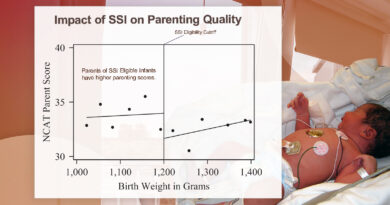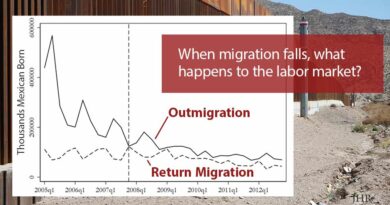Effective Policy for Reducing Poverty and Inequality? The Earned Income Tax Credit and the Distribution of Income
The United States stands out among industrialized nations as one with high poverty and income inequality. In 2016, the supplemental poverty measure shows that 13.9% of all persons, and 15.1% of children, lived in families with incomes below the poverty level. Since the mid-1970s earnings for less skilled workers have stagnated, and real family income for the bottom 20% of the population has made no gains. At the same time, there is the related problem of declines in employment rates among prime-aged men, and more recently, women. In a recent study, Hilary Hoynes and Ankur Patel examined whether one strategy to fight poverty—the earned income tax credit (EITC)—is working.
In this paper, the authors evaluate how the EITC impacts stagnant earnings and low employment. There is a large literature documenting the effects of the EITC on labor supply, showing that the credit leads to increases in work for single parents. A recent study by the U.S. Census shows that the EITC is the largest anti-poverty program for children in the United States, removing more than 4 million children from poverty. This calculation, however, may even fall short because it fails to take into account the increases in earnings that the EITC has been shown to generate.
The authors comprehensively examined the effects of the EITC on poverty and the distribution of income, capturing the effects of the tax payment as well as earnings effects and income adjustment effects.
The researchers report three key findings:
1. A $1000 increase in the EITC leads to a more than 8 percentage point reduction in poverty for families headed by single parents.
2. The income-increasing effects of the EITC are concentrated between 75 and 150 percent of the federal poverty line, with smaller effects in deep poverty (where there is less connection to the labor market) and at higher income levels.
3. The commonly used calculations of the effects of the EITC, by ignoring the induced earnings effect, underestimate the anti-poverty effects of the credit by up to 50 percent.
Read the full study in the Journal of Human Resources: “Effective Policy for Reducing Poverty and Inequality? The Earned Income Tax Credit and the Distribution of Income,” by Hilary Hoynes and Ankur Patel.
***
Hilary Hoynes is a Professor of Economics and Public Policy at the Goldman School of Public Policy, University of California–Berkeley and a Research Associate for the National Bureau of Economic Research. Ankur Patel is a Financial Economist at the U.S. Department of the Treasury.




